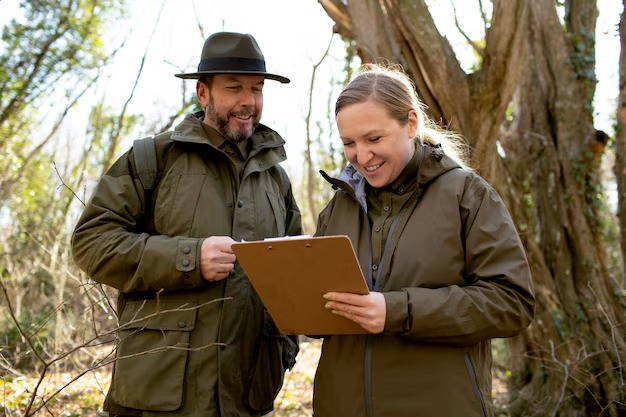
NLRB Defends Stands Firm in SpaceX Case Transfer Advocacy
NLRB Defends Stands Firm in SpaceX Case Transfer Advocacy
The ongoing complexities surrounding labor relations have attracted significant attention, particularly in light of recent events within major corporations. As various stakeholders navigate the intricate landscape of employee rights and organizational responsibilities, the implications of their actions can resonate far beyond initial interactions.
In this context, the examination of strategies employed by regulatory bodies underscores an essential commitment to upholding fairness in the workplace. Engaging with the nuances of conflicts that arise during negotiations highlights the importance of a proactive approach, ensuring that all parties remain aware of their rights and obligations.
As these conversations unfold, the role of regulatory agencies becomes increasingly pivotal. Their efforts to balance interests and promote equitable practices reflect a broader commitment to fostering an environment where both workers and employers can thrive. This exploration will delve into the recent challenges faced within the framework of labor relations, shedding light on the methodologies adopted to address them effectively.
Understanding NLRB’s Role in Labor Disputes
The organization responsible for overseeing workplace issues plays a critical role in managing conflicts between employees and employers. Through its regulatory framework, it aims to ensure fair treatment and protection of workers’ rights while facilitating constructive dialogue between the parties involved. Understanding its functions and influence can shed light on the broader landscape of labor relations.
This entity steps in to mediate disputes, investigate claims of unfair labor practices, and help enforce compliance with labor laws. Its work is essential in promoting a balanced workplace environment, where the concerns of both employees and employers are addressed effectively.
| Function | Description |
|---|---|
| Mediation | Facilitating discussions to resolve disputes between parties. |
| Investigation | Examining claims of unfair labor practices to determine validity. |
| Enforcement | Ensuring adherence to labor laws and regulations. |
| Education | Providing resources and guidance on labor rights and obligations. |
In summary, this institution serves a vital role in shaping labor relations, advocating for equitable treatment, and maintaining a harmonious work environment. Through its various functions, it fosters a system where workers feel empowered to voice their concerns while also recognizing the complexities of employer-employee dynamics.
SpaceX Case: Key Developments So Far
This section outlines the significant milestones surrounding the ongoing legal matters involving the aerospace manufacturer. Recent events have drawn considerable attention, as various stakeholders navigate the complexities of labor relations within the organization.
Initial Complaints: Early reports indicated a series of grievances filed by employees regarding workplace practices. These claims emphasized issues related to employee rights and reported violations in the environment of employment.
Agency Involvement: Following the complaints, governmental entities took an active role, seeking to address the matters at hand. Their involvement aimed to facilitate dialogue between the involved parties and ensure that regulations were being upheld.
Public Statements: Throughout the proceedings, public remarks from both sides have highlighted differing perspectives on the situation. These declarations have played a crucial role in shaping public opinion and understanding of the issues at play.
Ongoing Negotiations: As discussions progress, representatives from both sides have been engaged in negotiations. This phase remains pivotal in striving toward an amicable resolution, reflecting a commitment to maintaining a constructive dialogue.
Looking Ahead: Observers are keenly awaiting the next steps in this matter, as the outcomes may influence future practices within the industry. The developments in these proceedings are anticipated to set important precedents for similar situations in the future.
Legal Implications of Advocacy Strategies
The approach taken in legal representation can significantly influence the outcomes of negotiations and legal proceedings. Different strategies may lead to diverse consequences, not only for the parties involved but also for the broader legal landscape. Understanding how various methods of support and representation affect legal rights is vital for stakeholders aiming to navigate the complexities of the law effectively.
One critical aspect is the potential for misinterpretation or misuse of representational tactics. When parties engage in aggressive methods, they may inadvertently escalate tensions, which can prompt legal scrutiny. Additionally, these actions could result in adverse findings from regulatory bodies and unintended legal liabilities.
Moreover, the balance between passionate representation and ethical obligations is paramount. Legal professionals must remain cognizant of their responsibilities to maintain integrity while vigorously supporting their clients’ interests. Striking this balance is essential to uphold the principles of justice and fairness in any legal context.
Ultimately, the legal implications of chosen strategies can ripple through various facets of a case, impacting relationships, reputation, and the overall integrity of the legal system. Awareness and strategic planning are essential to mitigate risks and promote favorable outcomes.
Stakeholder Reactions to NLRB Decisions
This section addresses the varied responses from different parties concerning recent regulatory rulings. The implications of these determinations stretch across multiple domains, influencing perceptions and operational practices within organizations.
Key stakeholders include:
- Employees: Reactions often vary based on individual circumstances and the perceived impact on job security and workplace rights.
- Employers: Companies may express concern about compliance and potential disruptions in operational efficiency as they adapt to new regulations.
- Labor Unions: Unions typically view these outcomes as either victories or setbacks, influencing their collective bargaining strategies.
- Legal Experts: The legal community often scrutinizes these decisions for their broader implications on labor law and litigation trends.
Responses can be categorized as follows:
- Supportive: Some stakeholders perceive the rulings as necessary for protecting worker rights.
- Critical: Others argue that these decisions may overreach, creating an unbalanced environment.
- Ambiguous: Many parties remain undecided, closely monitoring how the changes will affect their operations and interactions.
Ultimately, the impact of these directives will depend on how stakeholders adapt and respond to the evolving landscape of workplace relations.
Impact on Future Labor Relations
The recent events surrounding the labor board’s intervention reflect broader implications for the dynamics between employees and employers. As organizations navigate the complexities of worker representation, the outcomes of such situations can shape policies and practices that may resonate through various sectors. Understanding the potential ramifications can guide stakeholders in fostering more balanced and equitable environments.
Shifts in Employer Strategies
With regulatory bodies taking assertive stances, companies might reassess their approaches to employee engagement and representation. A trend towards increased transparency and cooperative communication models may emerge, encouraging a culture of dialogue rather than confrontation. This shift could lead to more proactive measures in addressing worker concerns, ultimately enhancing workplace morale and productivity.
Worker Empowerment and Representation
As employees witness the outcomes of assertive oversight, they may feel empowered to voice their opinions more freely. This empowerment can lead to heightened awareness of workers’ rights, fostering a climate where collective bargaining and union membership are seen as viable options. Increased participation in labor relations will likely necessitate adaptations in organizational policies to accommodate evolving expectations from their workforce.
| Aspect | Potential Change |
|---|---|
| Employee Engagement | Increased dialogue and transparency |
| Company Policies | More inclusive practices |
| Workforce Empowerment | Higher participation in decision-making |
| Collective Bargaining | Stronger advocacy for rights |
Comparing Advocacy in Similar Cases
This section examines the approaches taken in various instances involving labor relations and disputes, shedding light on the methods employed to protect workers’ rights. By analyzing comparable situations, we can uncover patterns of behavior and strategies that enhance the effectiveness of representation.
-
Engagement of Legal Frameworks:
Similar situations often reveal how legal frameworks can be leveraged or challenged. Key examples include:
- The application of labor laws that prioritize employee interests.
- Utilization of precedent cases to strengthen arguments.
- The role of public opinion in influencing outcomes.
-
Coalition Building:
The formation of coalitions among different stakeholders is a common tactic. Effective collaborations can lead to:
- Greater resource mobilization.
- Enhanced visibility for grievances.
- A unified front that can leverage more significant pressure.
-
Transparency and Communication:
Maintaining open lines of communication can be critical. Key points often include:
- Regular updates provided to employees.
- Involvement of workers in decision-making processes.
- Utilization of digital platforms for broad outreach.
By contrasting these elements across multiple incidents, we can gain insights into not only the challenges faced but also the successful strategies that led to favorable resolutions for labor interests.
Q&A: Nlrb defends zealous advocacy spacex case transfer
What is the significance of the recent lawsuit reported by Reuters involving the National Labor Relations Board?
The lawsuit reported by Reuters highlights the ongoing tensions between labor organizations and employers, focusing on the National Labor Relations Board’s enforcement actions and their implications for labor rights.
How does the appeals court influence the outcome of federal court cases?
The appeals court serves as a higher judicial authority that reviews decisions made by federal courts, ensuring that legal standards are upheld and providing a mechanism for correcting errors in lower court rulings.
What are the key issues being addressed in the California federal lawsuit filed in 2024?
The California federal lawsuit filed in 2024 addresses key issues such as employee rights, workplace conditions, and compliance with labor laws, reflecting broader national trends in labor relations.
How does the National Labor Relations Board interact with in-house legal teams during lawsuits?
The National Labor Relations Board often collaborates with in-house legal teams to ensure compliance with labor laws and to prepare for potential lawsuits, providing guidance on legal strategies and regulatory requirements.
What are the implications of a ruling from the court of appeals on ongoing lawsuits?
A ruling from the court of appeals can set important legal precedents that affect ongoing lawsuits, influencing how lower courts interpret laws and how parties approach future litigation.
How does a federal court determine jurisdiction in a lawsuit involving multiple states?
A federal court determines jurisdiction based on factors such as diversity of citizenship, the amount in controversy, and whether the case involves federal questions, ensuring proper venue for lawsuits that span multiple states.
What role does Reuters play in reporting on significant lawsuits?
Reuters plays a crucial role in reporting on significant lawsuits by providing timely and accurate information, helping to inform public discourse and keep stakeholders updated on legal developments.
How do in-house counsel prepare for potential appeals court hearings?
In-house counsel prepare for potential appeals court hearings by conducting thorough legal research, reviewing trial records, and formulating arguments that address the specific legal issues raised during the original lawsuit.
What trends are emerging from recent California federal lawsuits as we approach 2024?
As we approach 2024, recent California federal lawsuits reveal trends such as increased scrutiny of employment practices, heightened protection for workers’ rights, and a growing emphasis on corporate accountability.
What challenges do companies face when navigating lawsuits involving the National Labor Relations Board?
Companies face challenges such as understanding complex labor laws, managing public relations during high-profile lawsuits, and ensuring compliance with rulings from both the National Labor Relations Board and federal courts.
What recent developments have occurred regarding the lawsuit against the NLRB involving SpaceX?
The lawsuit against the NLRB involves SpaceX’s challenge to the labor board’s structure, with a federal judge in Texas ruling on various procedural matters.
How has the 5th Circuit been involved in the SpaceX lawsuit?
The 5th Circuit has been reviewing aspects of the case, particularly focusing on jurisdiction over the case and the implications of the transfer order requested by SpaceX.
What is the significance of the July decision by a U.S. District Judge related to this case?
The July decision by U.S. District Judge Rolando Olvera was significant as it addressed SpaceX’s bid to keep its lawsuit challenging the labor board’s structure in Texas federal court.
What did the 5th Circuit panel determine regarding the outcome of the lawsuit?
The 5th Circuit panel’s determination will influence the outcome of the lawsuit by clarifying whether it should remain in Texas or be transferred to another jurisdiction.
What are some key allegations made in the SpaceX lawsuit?
SpaceX’s lawsuit includes allegations stemming from a separate NLRB complaint accusing the company of forcing laid-off workers to sign severance agreements that include illegal provisions.
How does the NLRB defend its position in this ongoing legal battle?
The NLRB is defending its lawyers and processes, arguing that the claims made by SpaceX lack merit and that they do not interfere with its enforcement proceedings.
What role does Judge Alan Albright play in this case?
Judge Alan Albright in Waco is overseeing aspects of the lawsuit, including motions related to jurisdiction and claims about the structure of the National Labor Relations Board.
What does the term “administrative board case” refer to in this context?
An administrative board case refers to proceedings initiated by the NLRB against companies, including claims about unfair labor practices or violations of labor laws.
How has CEO Elon Musk been mentioned in relation to this lawsuit?
CEO Elon Musk has been referenced in discussions about SpaceX’s legal strategies and decisions regarding labor relations and employee treatment.
What are the implications of a federal appeals court ruling on similar claims in cases like SpaceX’s?
A ruling from a federal appeals court could set important precedents for similar claims in cases involving labor relations, potentially affecting how companies handle disputes with the NLRB.






